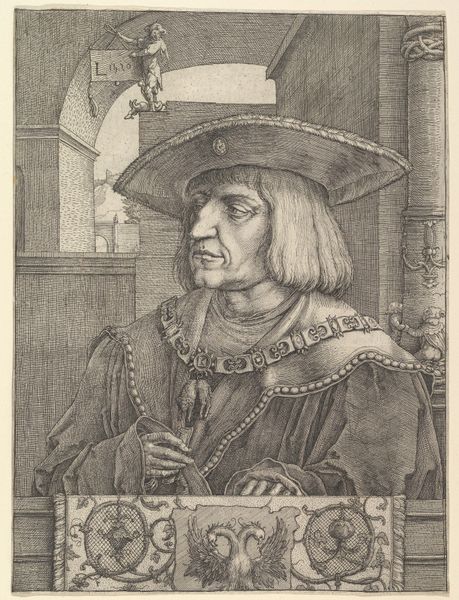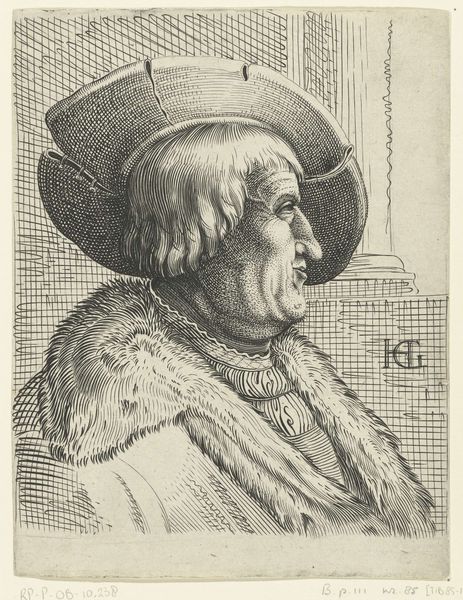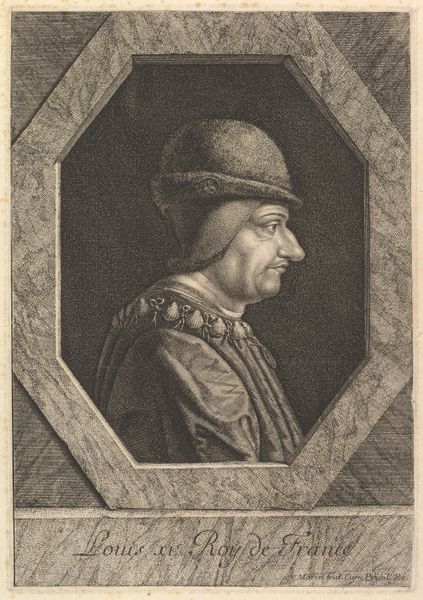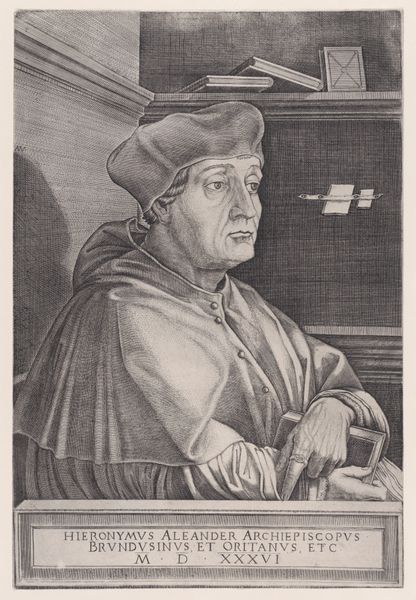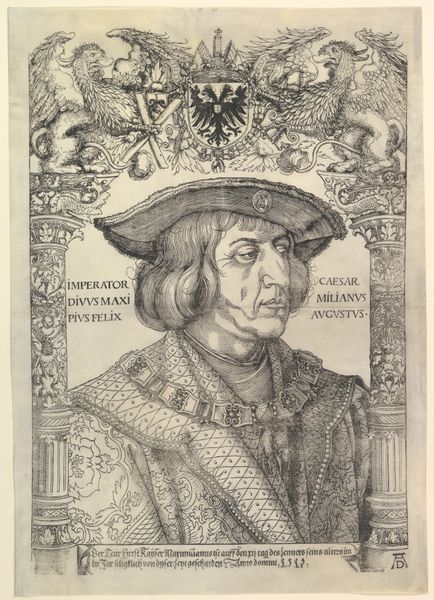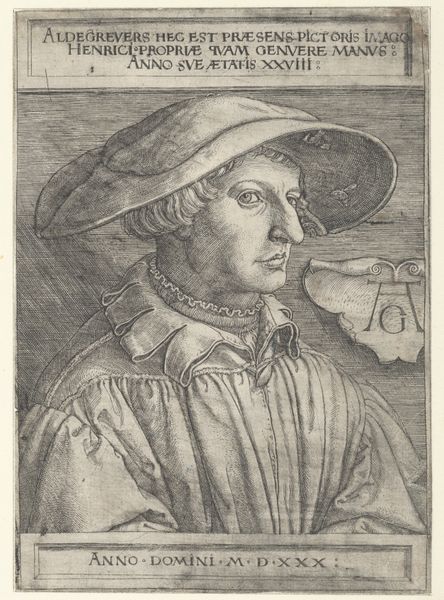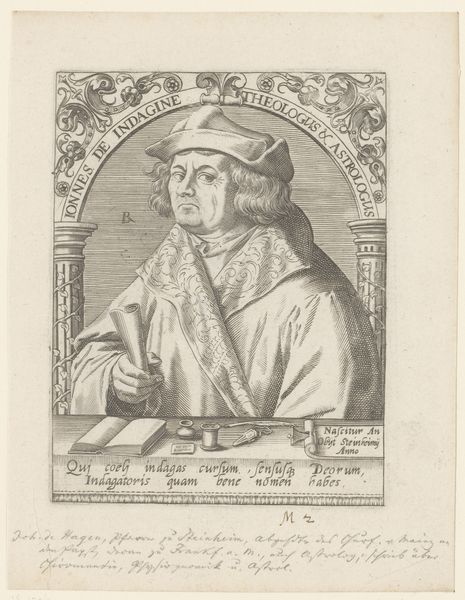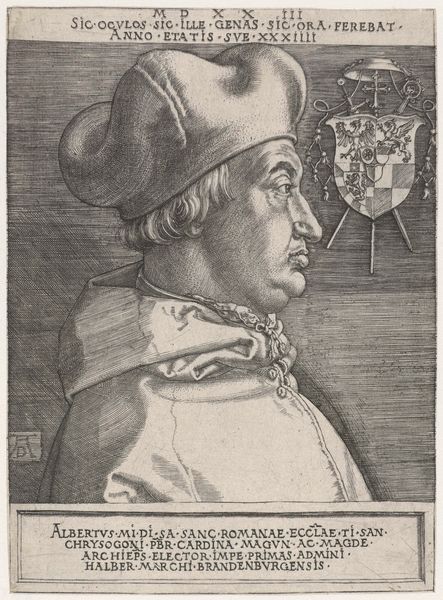
print, etching, engraving
#
portrait
# print
#
etching
#
11_renaissance
#
portrait drawing
#
history-painting
#
engraving
Dimensions: 10 1/4 x 7 5/8 in. (26.04 x 19.37 cm) (image, trimmed within platemark)
Copyright: Public Domain
Lucas van Leyden created this image of Emperor Maximilian I, using the technique of engraving. It is not drawing or painting, but rather, the artist carved lines into a metal plate, which was then inked and printed. Look closely, and you can see the way that the density of engraved lines creates the image’s shading. The textures of Maximilian’s hat and robe, the details of his jewelry, and the background architecture are all described through the skilled application of the engraver’s tool. Engraving was a highly specialized craft, requiring years of training to master, and in van Leyden’s time, printmaking was undergoing an expansion, which reflected growing trade and increasing literacy. This artwork stands as a testament to the fusion of artistic vision, technical mastery, and the changing means of production in the early 16th century. It reminds us that art is never created in a vacuum, but is deeply intertwined with the economic and social forces of its time.
Comments
minneapolisinstituteofart almost 2 years ago
⋮
Lucas van Leyden created this portrait to commemorate Emperor Maximilian's death in 1519. To get this print on the market across the Holy Roman Empire while news of the emperor's death was still fresh, the artist used the more expedient method of etching for the background, costume, and hands but reserved the more refined technique of engraving to render an accurate likeness of Maximilian's face. His inventive solution made him the first artist in the North to combine etching and engraving in the same print.
Join the conversation
Join millions of artists and users on Artera today and experience the ultimate creative platform.
